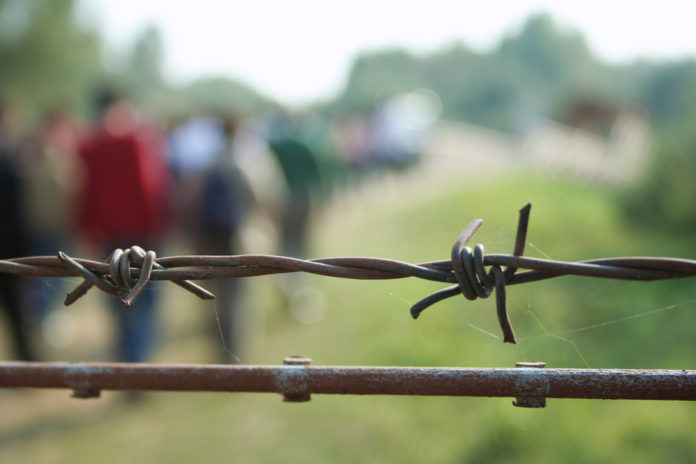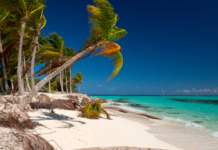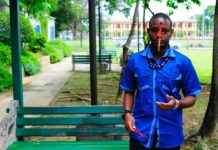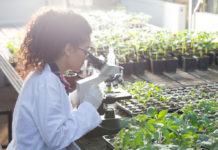“No one thinks one day they will be a refugee,” said Miriam, 23. She is a Venezuelan currently hiding in Trinidad. “At home, I was taking classes to be an accountant. Here, it’s not easy. You need documents or you can’t go to the schools.”
With the current global and regional social, political, and economic crises, there has been an increase in people escaping to and through the Caribbean. As we face the world’s largest global migrant crisis since World War II, the region is again becoming a Mecca for displaced and dispossessed persons seeking asylum.
The UN Convention Relating to the Status of Refugees classifies a refugee as a person who “owing to a well-founded fear of being persecuted for reasons of race, religion, nationality, membership of a particular social group or political opinion is outside the country of his nationality, and is unable to or owing to such fear, unwilling to avail himself of the protection of that country.”
The death of Hugo Chavez and succession of his rule by Nicolás Maduro has seen Venezuela undergo a rapid deterioration. Triple-digit inflation, lack of medical supplies and allegations of brutality on both Government and Opposition sides have become the norm—leaving citizens feeling unprotected by those who should have their best interest at heart. For Miriam, “Venezuela is not nice now. The people cannot have their rights. If you do not agree with the government or you have the wrong company it is dangerous.”
Whether Maduro is in the right or wrong, Venezuela faces a humanitarian crisis.
The Caribbean is full of such stories.
In 2013 the Dominican Republic declared that anyone born to Haitian immigrant parents after 1929 was not entitled to citizenship, leaving approximately 200,000 people suddenly stateless and facing deportation to Haiti, a country that some of them had never been to and which is classed as the poorest in the region.
In Central America’s Northern Triangle (El Salvador, Honduras, and Guatemala) where murder, gender-based violence, and extortion are the order of the day people are fleeing for their lives. Many of them have sought refuge in Belize, which now is the number-one Caribbean hosting country for asylum-seekers but has been a part of the system for decades.
“I sought asylum here [Belize] due to the guerrillas in Chalatenango, El Salvador, around the 1960s,” said refugee Anne. “Guerrillas would capture an entire village and anyone who went against them were killed. Many parents were instructed by the guerrillas to kill innocent children and infants, just because they did not want them, and bury them in shallow holes. Even the elderly people were killed because to the bad people they were of no use. People had to escape late in the night without taking any luggage. Many left everything behind.”
Finding work
Walk the streets of Woodbrook, a middle class suburb and entertainment district in Port-of-Spain, and you will notice a difference in its demographics from the rest of the country. Asian, South American, and Middle Eastern visitors flock here—and some of them find work here too.
Although always a hub for African and Caribbean migration, factors such as T&T having strong Syrian and East Indian communities, being a transit point to the US, and requires no visa for entry from some countries, have resulted in people also entering from Asia and the Middle East. Those seeking refugee status are not eligible to work until all documentation is in place, but some find a way.
Said Miriam, “Places hire us to work then when it’s time to pay they refuse because they know we’re hiding and can’t report them. Women are not safe. A lot of times, walking around, the men in this place can give rude signs and talk. Sometimes they follow you. They think all the girls are prostitutes.”
This seems to be another negative that has stood the test of time. Anne recalled from the early days of her seeking refuge in Belize, “Employment was hard. If you were lucky you got a job but were underpaid with no benefits. Education existed to those who had the finance or to the more established persons.”
Caribbean refugees abroad
In the Caribbean, most entries are by plane, documentation suggests. Some people attempt multiple times before being successful or completely giving up and paying exorbitant fees to boatmen who promise safe travel. The lucky reach their destination; others are dropped off at points convinced they have arrived only to realise they have been scammed and abandoned. Some even die at sea but for them it’s worth the risk. Their wish is simple: to enjoy asylum and be integrated into their new community.
Seeking asylum can a two-way street for some Caribbean people. As a trans woman, Venus experienced much negativity for choosing to “live out loud” in Trinidad. A brutal 2014 attack—in which she was stabbed repeatedly by her date and his cohorts—made national news and solidified her decision to seek asylum in the Netherlands. Even though she entered with all proper documentation she still had to undergo a process.
“I left knowing I would seek asylum so I declared as soon as I got to Schiphol Airport. I was immediately fingerprinted and questioned then sent to a detention centre where you stay for ten days. They take everything. You get minimal clothing and you can’t go outside. It’s like a concentration camp. If you want fresh air you’re accompanied outside by a guard. It doesn’t matter if you came on a first-class flight or a raft, everyone gets the same treatment. If your case is not decided then you go to a refugee camp.”
Venus was sent to camp in Lindbergh.
“If Amsterdam is like Port-of-Spain, Lindbergh is Princes Town [a town in rural south Trinidad]. There were even some Trinis as well,” she joked.
Since then she has received her papers and is not a resident. She has three years for integration. The Dutch Government gives a grant of 10,000 euros for education to facilitate this. She still struggles with language but is happy that she made the decision. According to Venus, “I feel safe here.”
Need for legislation, infrastructure
The United Nations Refugee Agency (UNHCR) reported a massive 257 percent increase in the number of asylum seekers in the Caribbean from 2015-2016. As of April 2017, there were 640 documented asylum seekers, refugees, and persons of concern in Trinidad and Tobago, putting the nation in the top three havens for asylum seekers entering the region. (The other two are Belize and the Dominican Republic.)
“As of now, there is no set domestic legislation in place for naturalisation and integration [in T&T]. Locally, integration is a bit de facto. The numbers are surpassing our capacity and we can no longer work as we have. This has to be dealt with on a different level,” said Rochelle Nakhid, programme coordinator of the Living Water Community’s Ministry for Refugees and Asylum Seekers, at a media workshop held with the UNHCR in T&T in June.
This ad hoc atmosphere reflects a large part of the problem with the Caribbean refugee situation. At the core of provisions for the asylum seeker is non-refoulement (no forced return to situations where life or freedom is under threat). Persons are also not to be penalised for seeking asylum; however, this is not always the case. The Order of Supervision document given to asylum seekers in T&T to avoid detention is not always upheld as not all members of the Police Service have been sensitised to the existence of the document. There are still cases of asylum seekers presenting papers and being detained. Before the establishment of the country’s Immigration Detention Centre in 2009, presenting an asylum seeker through lawful channels could result in detention at prison. Imagine leaving persecution only to be persecuted.
Infrastructure, legislation, and collaboration are the immediate needs of the refugee system in T&T, according to the UNHCR and the Living Waters Community. Rights to proper healthcare and education also ought to be part of the package yet many asylum seekers claim to get denied at health centres or, in the case of Miriam, educational institutes. In 2000, T&T acceded to the 1951 Convention Related to the Status of Refugees and its 1967 Protocols. The country also became a signatory of the United Nations (UN) Convention Against Transnational Organised Crime and supplementing conventions, and the UN Convention on the Protection of the Rights of all Migrant Workers and Members of Their Families which allows people to “seek and enjoy asylum” as stipulated by Article 14 of the Universal Declaration of Human Rights.
A way forward
The Living Waters Community which has been working on behalf of those seeking safety for decades and the recently instituted UNHCR office have been on the ground advocating for the humane treatment of those who come seeking help. They are currently aiding in the development of legislation and training the T&T Immigration Division’s Refugee Unit for a proper handing over of roles and responsibilities pertaining to asylum seekers. Also on the agenda is fostering relations with educational institutes like the University of the West Indies to allow refugees like Miriam to enroll in classes.
Only time will tell if these measures work. Integration into a new society, especially when you do not speak the native language like Venus and Miriam, can be difficult. Citizens may begin to feel slighted in the face of provisions they feel should belong to them being given to those who have no national affiliations. People fleeing persecution fear being detained and deported, preferring to hide while eking out a living at the mercy of those who could care little for their human situation. One thing is for certain: this situation is nowhere near resolved and as countries like T&T and Belize work to figure it out, the rest of the Caribbean waits to follow.



















